Introduction: The Promise of Modern Anti-Aging Innovations
In today’s thriving world of cosmetic dermatology, collagen laser and fractional facial treatments are revolutionizing the quest for youthful skin. These groundbreaking technologies offer patients an opportunity to achieve dramatic anti-aging results without the invasiveness of traditional surgical procedures. Through the strategic stimulation of natural skin renewal mechanisms, both collagen laser and fractional facial therapies have earned their place among the most sought-after anti-aging innovations. As we delve deeper into their mechanisms, benefits, risks, and practical considerations, it becomes clear why these therapies represent a pivotal shift in modern skin care solutions.
You may also like: How to Tighten Loose Skin After Weight Loss: Science-Backed Strategies for a Firmer, Healthier You
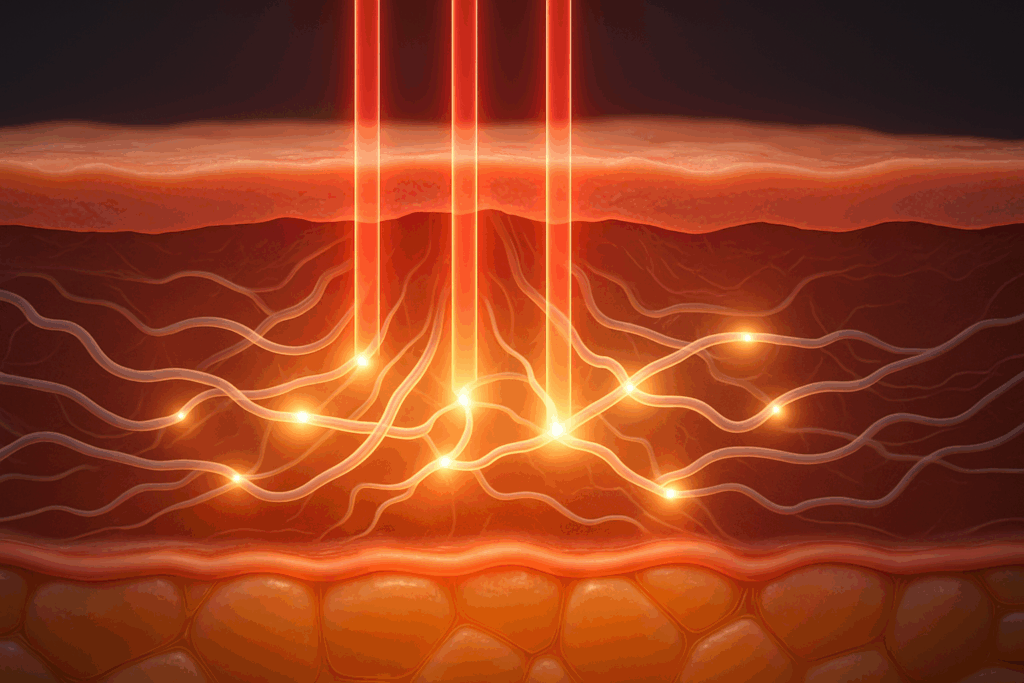
Understanding the Science Behind Collagen Laser Technology
At its core, collagen laser therapy operates on the principle of stimulating the body’s innate healing responses. Collagen, the vital structural protein responsible for skin firmness and elasticity, diminishes with age, resulting in sagging skin, fine lines, and wrinkles. By delivering precisely targeted energy to the deeper layers of the skin, collagen lasers trigger fibroblasts to ramp up collagen production. The result is tighter, smoother, and more youthful skin over time.
This method’s appeal lies in its minimally invasive nature. Unlike traditional facelifts that require surgical intervention and prolonged recovery periods, collagen laser treatments allow patients to resume daily activities with minimal downtime. Moreover, recent advancements in laser technology, such as fractional laser systems, have further refined outcomes by limiting damage to surrounding tissues, ensuring faster healing and more consistent results. The integration of fractional technology into collagen stimulation strategies has dramatically enhanced both efficacy and safety profiles.
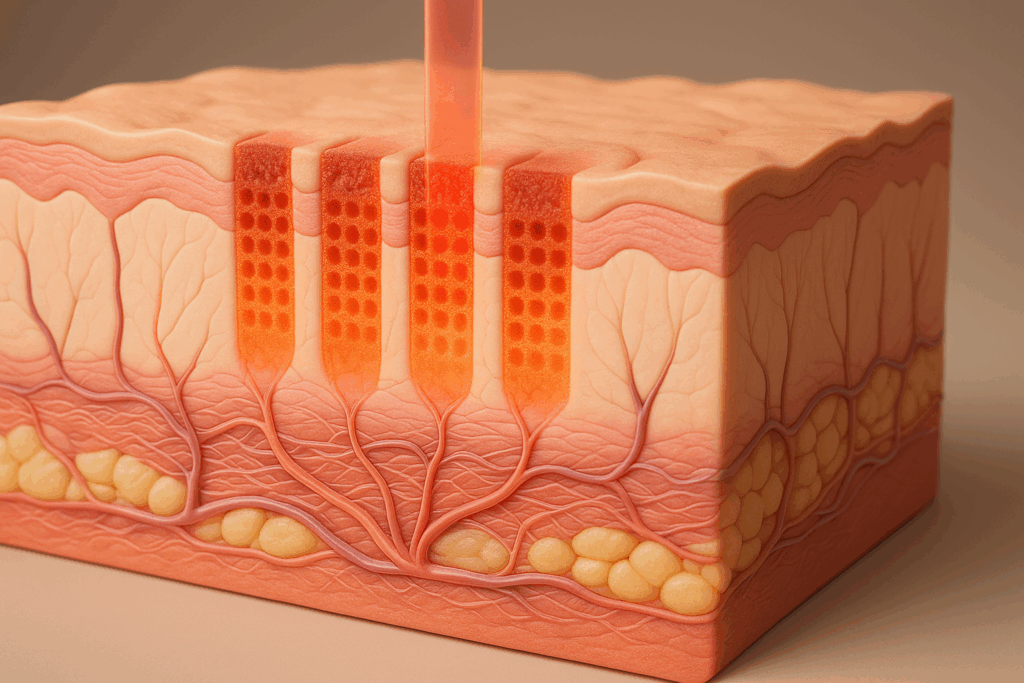
The Power and Precision of Fractional Facial Treatments
Fractional facial treatments represent a significant evolution in laser-based skin rejuvenation. Unlike earlier, more aggressive laser resurfacing techniques that ablated the entire surface of the skin, fractional lasers target only a fraction of the skin at a time. By creating microscopic columns of treated skin surrounded by healthy, untouched tissue, fractional facial therapies promote rapid healing while maximizing therapeutic effects.
Patients often experience improvements in skin tone, texture, pigmentation irregularities, and even acne scars. Because fractional facial procedures work at both the epidermal and dermal levels, they simultaneously resurface the skin and stimulate deeper collagen remodeling. This dual action offers comprehensive rejuvenation, making fractional techniques indispensable tools for anti-aging protocols.
Furthermore, the ability to customize treatment intensity and depth allows practitioners to tailor procedures to individual skin types and concerns. Whether addressing early signs of aging or more significant dermal degradation, fractional facial interventions provide versatile, patient-specific solutions.
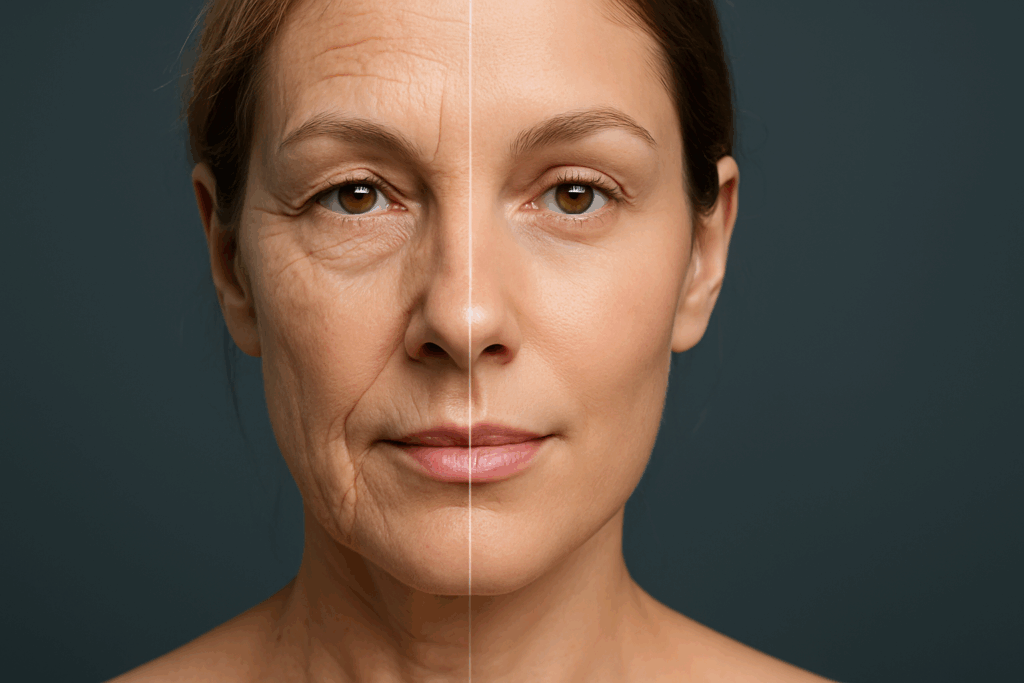
Collagen Laser and Fractional Facial Synergy: A Comprehensive Approach to Rejuvenation
When used in tandem, collagen laser and fractional facial therapies create a synergistic effect that maximizes skin revitalization. The collagen laser focuses primarily on stimulating deeper collagen production, rebuilding the skin’s supportive matrix, while fractional facial treatments address surface irregularities and finer structural imperfections. Together, they harmonize surface refinement with foundational structural enhancement.
For many patients, combining these modalities results in a more dramatic improvement than either therapy could achieve alone. Fine lines diminish, skin tone evens out, scars fade, and the overall skin texture becomes smoother and more resilient. Importantly, this comprehensive approach often yields longer-lasting results, as deep structural improvements support sustained surface aesthetics.
Clinicians carefully assess individual skin characteristics, lifestyle factors, and aesthetic goals when designing combination protocols. Personalization ensures optimal outcomes while minimizing potential risks, setting a gold standard for modern, non-invasive anti-aging treatments.
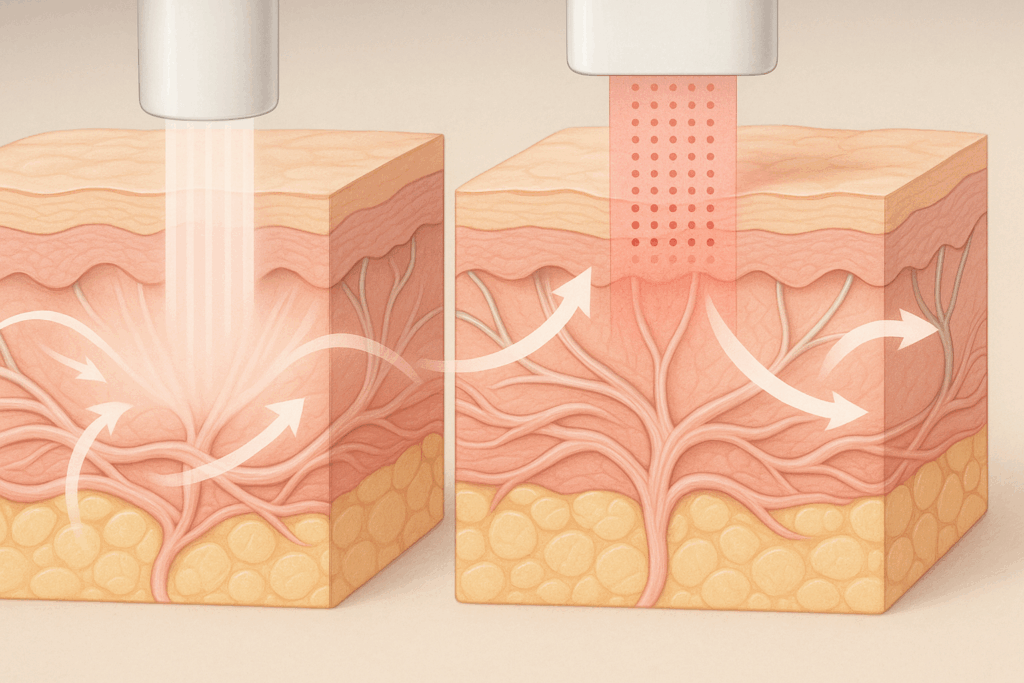
What to Expect During a Collagen Laser Treatment
Understanding the process of collagen laser therapy prepares patients for a smoother, more comfortable experience. Typically, treatment begins with a thorough consultation during which a dermatologist evaluates the patient’s skin type, medical history, and cosmetic objectives. Once a tailored plan is devised, the skin is cleansed and a topical anesthetic may be applied to enhance comfort.
During the procedure, the laser handpiece delivers pulses of energy into the dermis while cooling mechanisms protect the outer skin. Patients often describe a sensation similar to mild pinpricks or warmth. Session length varies based on the treatment area, but most sessions last between 30 minutes to an hour.
Post-treatment, mild redness, swelling, or sensitivity is common but generally subsides within a few days. Adhering to post-procedure care guidelines, such as avoiding sun exposure and applying prescribed skincare products, promotes optimal healing and results. Over the following weeks, as collagen remodeling unfolds, patients observe gradual but significant skin improvements.
The Process and Experience of Fractional Facial Treatments
Fractional facial treatments share similarities with collagen laser therapies in their procedural steps but differ in their targeted effects and sensation profiles. The procedure begins with skin cleansing and application of a topical anesthetic to minimize discomfort. Once the skin is prepared, the fractional laser device creates thousands of microthermal zones in the skin, leaving surrounding tissue untouched to aid in healing.
Patients often experience a warming or tingling sensation during treatment, and session duration ranges from 20 minutes to an hour, depending on the treatment area. Post-treatment redness and swelling are expected, resembling a mild sunburn, but usually resolve within several days.
Healing occurs rapidly due to the preserved healthy tissue between treated zones. Visible improvements in skin tone and texture typically emerge within a week, with continued enhancement over the following months as deeper collagen remodeling progresses. Multiple sessions may be recommended to achieve optimal results, particularly for more severe skin concerns.

Breakthrough Results: Transformative Outcomes with Collagen Laser and Fractional Facial Treatments
Clinical evidence and patient testimonials underscore the transformative potential of collagen laser and fractional facial therapies. Improvements are not merely superficial; they extend to the very structure of the skin. Enhanced collagen density, reduced wrinkle depth, tightened skin, minimized pore size, and balanced pigmentation are among the notable achievements reported.
Patients often describe a “lit-from-within” glow, firmer facial contours, and an overall youthful vitality that belies their chronological age. Such results contribute to higher self-confidence and satisfaction, emphasizing the psychological as well as physical benefits of these treatments.
Long-term follow-ups reveal that consistent collagen stimulation via periodic maintenance treatments can even slow the visible progression of aging. In effect, collagen laser and fractional facial interventions offer a proactive rather than merely reactive approach to skin aging.
Who Are Ideal Candidates for Collagen Laser and Fractional Facial Treatments?
While collagen laser and fractional facial procedures are safe for many individuals, ideal candidates share certain characteristics. Typically, patients in their late twenties and beyond who are experiencing early to moderate signs of aging, such as fine lines, mild laxity, and uneven skin texture, achieve the best outcomes. However, younger patients seeking preventative strategies also benefit from early collagen stimulation.
Candidates should possess generally healthy skin, free of active infections, severe acne, or certain dermatologic conditions that could impair healing. A commitment to sun protection and proper skincare following treatment further enhances success rates.
During initial consultations, practitioners assess candidacy by considering not only physical characteristics but also psychological readiness and realistic expectations. Honest communication between patient and provider fosters a positive experience and optimizes satisfaction with results.
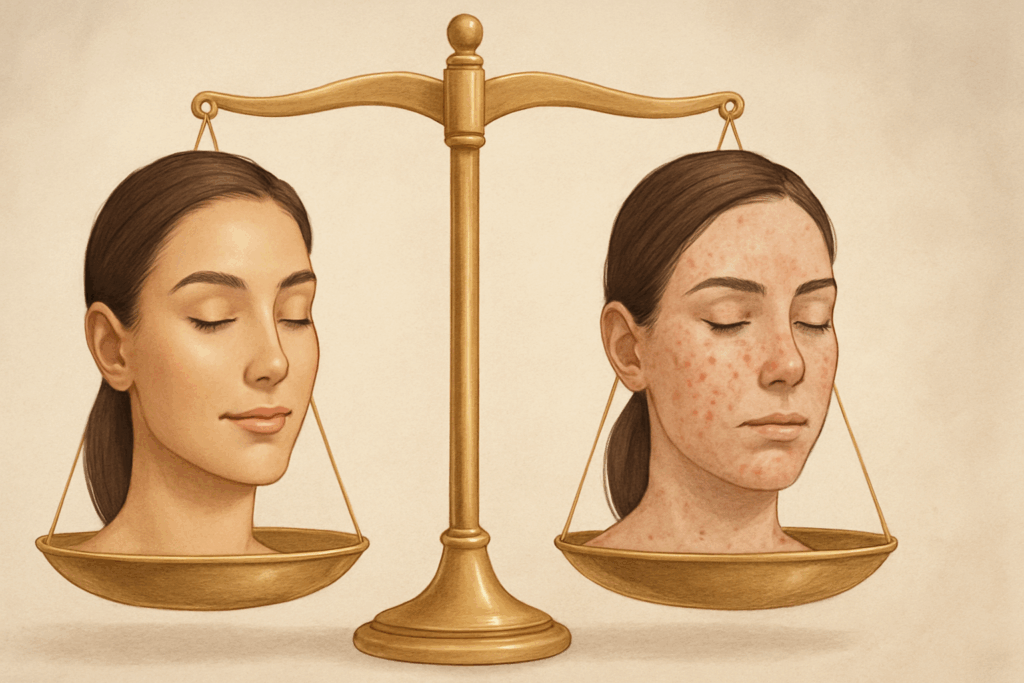
Potential Risks and Considerations: What You Need to Know
As with any medical procedure, collagen laser and fractional facial treatments carry potential risks, albeit low when performed by qualified professionals. Common, mild side effects include temporary redness, swelling, and sensitivity. Less commonly, patients may experience hyperpigmentation, hypopigmentation, scarring, or infection, particularly if post-care instructions are not meticulously followed.
Patients with darker skin tones may require special consideration, as they are more prone to pigmentary changes. Utilizing appropriate laser settings and selecting experienced providers skilled in treating diverse skin types mitigates such risks.
A thorough understanding of the benefits and limitations of these therapies empowers patients to make informed decisions. Setting realistic expectations regarding the extent of improvements and the timeline for visible changes is critical to ensuring patient satisfaction.
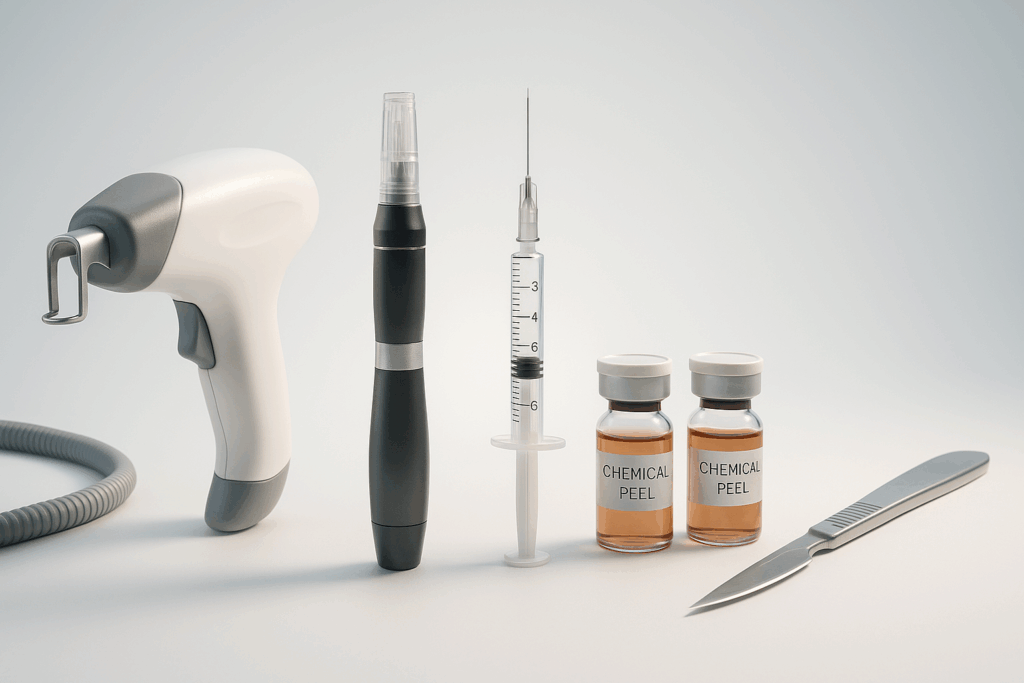
Collagen Laser Versus Other Anti-Aging Solutions: A Comparative Perspective
When evaluating anti-aging options, patients often weigh collagen laser and fractional facial treatments against other modalities such as injectables, chemical peels, microneedling, and surgical facelifts. Each approach offers unique advantages and limitations, making personalized consultation essential.
Injectables like Botox and dermal fillers provide rapid, localized results but do not stimulate deep skin remodeling. Chemical peels can improve surface texture but often require longer recovery periods. Microneedling induces collagen production similarly but with less precision and intensity than laser therapies. Surgical facelifts deliver dramatic lifting effects but entail significant downtime, risks, and financial investment.
In comparison, collagen laser and fractional facial procedures strike a balance between efficacy, safety, minimal downtime, and progressive, natural-looking outcomes. They offer a compelling middle ground for individuals seeking substantial rejuvenation without the invasiveness of surgery.
How to Maximize and Maintain Your Results
Achieving stellar results with collagen laser and fractional facial treatments requires a holistic approach that extends beyond the treatment sessions themselves. Daily sun protection remains paramount, as ultraviolet exposure accelerates collagen degradation and compromises outcomes. Using broad-spectrum sunscreens with SPF 30 or higher, wearing protective clothing, and avoiding peak sun hours are foundational practices.
Incorporating a high-quality, personalized skincare regimen rich in antioxidants, peptides, and growth factors further supports skin renewal and resilience. Regular use of products containing retinoids, hyaluronic acid, and vitamin C enhances and prolongs the benefits achieved through professional treatments.
Lifestyle factors such as adequate hydration, a balanced diet rich in skin-supportive nutrients, regular exercise, stress management, and sufficient sleep also significantly impact skin health and treatment longevity. Maintenance sessions, spaced several months apart, allow patients to sustain their youthful radiance over the long term.
Conclusion: Embracing the Future of Youthful Skin with Collagen Laser and Fractional Facial Treatments
Collagen laser and fractional facial treatments stand at the forefront of anti-aging innovations, offering a transformative path to healthier, more resilient skin. By combining scientific precision with the body’s natural regenerative capabilities, these therapies not only reverse visible signs of aging but also fortify the skin against future damage. Patients who invest in these advanced technologies experience not just aesthetic enhancement but also renewed confidence and well-being.
Understanding the intricacies of each procedure, the synergy they offer when used together, and the essential maintenance strategies ensures that patients achieve lasting, life-changing results. As research and technology continue to evolve, collagen laser and fractional facial treatments will undoubtedly become even more sophisticated, offering new opportunities for skin rejuvenation that were once unimaginable.
For anyone serious about embracing the most effective, non-invasive pathways to youthful, vibrant skin, collagen laser and fractional facial treatments are essential considerations. With the right guidance, realistic expectations, and commitment to post-care, the journey toward timeless beauty is well within reach.
Frequently Asked Questions About Collagen Laser and Fractional Facial Treatments
1. How Do Collagen Laser and Fractional Facial Treatments Impact Long-Term Skin Health?
While many focus on the short-term glow from collagen laser and fractional facial treatments, the real magic happens over time. These therapies stimulate fibroblast activity, the cells responsible for collagen and elastin production. Over months, this deep cellular regeneration strengthens the skin’s foundational layers, enhancing resilience against future sagging and wrinkles. In clinical settings, patients who undergo consistent treatments every 6–12 months often show reduced visible aging over five to seven years compared to those who rely solely on topical skincare. The longevity of these results hinges on personalized maintenance plans and integrating daily sun protection.
2. Why Are Collagen Laser Results More Dramatic When Combined with Skin Nutrition?
Few realize that collagen laser outcomes can be amplified through internal skin support. Consuming foods rich in Vitamin C, amino acids, and antioxidants fuels the collagen synthesis triggered by the laser. For example, patients who integrate collagen peptides and high-antioxidant diets report faster recovery and enhanced glow following their fractional facial sessions. Nutrition not only boosts short-term healing but also helps extend the skin-tightening effects. Working with a dermatologist and a nutritionist can create a synergy that maximizes treatment results far beyond what either approach could achieve alone.
3. Are There Psychological Benefits Associated with Collagen Laser and Fractional Facial Treatments?
Emerging research suggests that collagen laser and fractional facial treatments can significantly impact psychological well-being. Improvements in skin tone and texture often lead to enhanced self-esteem, reduced social anxiety, and even greater professional confidence. This is particularly noted among individuals struggling with post-acne scarring or age-related volume loss. In fact, patients frequently report feeling “renewed” not just physically but emotionally after a comprehensive course of treatments. Psychological resilience is an often-overlooked but powerful outcome of investing in skin health.
4. How Does Skin Type Affect the Success of Fractional Facial and Collagen Laser Treatments?
Different skin types respond uniquely to collagen laser and fractional facial therapies. For instance, Fitzpatrick Skin Types I–III typically see faster, more predictable results due to lower melanin levels, whereas darker skin tones (Types IV–VI) require modified settings to prevent hyperpigmentation. Expert practitioners customize laser parameters—such as energy levels and pulse duration—to optimize safety and outcomes across diverse skin profiles. Recent advancements in fractional laser technologies, like non-ablative lasers, have made it safer for a broader range of skin tones to enjoy these benefits without compromising skin integrity.
5. Can Collagen Laser and Fractional Facial Treatments Address Early Signs of Skin Laxity?
Absolutely. Collagen laser and fractional facial treatments are ideal for addressing early skin laxity before it becomes pronounced. Mild jowling, slight loss of jawline definition, and nasolabial folds are prime targets for early intervention. By stimulating collagen remodeling at the first signs of aging, these therapies can prevent the need for more invasive procedures later on. Dermatologists increasingly advocate for a proactive approach: beginning treatments in one’s late twenties to early thirties to “bank” collagen for the future. This preventive strategy results in more natural, gradual aging over the decades.
6. How Does the Body’s Healing Response Enhance Fractional Facial Treatment Outcomes?
A lesser-discussed aspect of fractional facial treatments is how the body’s natural wound-healing response amplifies results. Micro-injuries created during a fractional facial trigger an orchestrated cascade of biological repair mechanisms. Platelet activation, cytokine release, and fibroblast proliferation collectively accelerate new tissue growth and collagen deposition. Some practices now combine fractional lasers with Platelet-Rich Plasma (PRP) therapies to supercharge this healing phase. Leveraging the body’s intrinsic regenerative powers makes fractional facial results not just more dramatic but more enduring.
7. What Innovations Are Shaping the Future of Collagen Laser and Fractional Facial Treatments?
The field of collagen laser and fractional facial treatments is evolving rapidly, with innovations such as robotic-assisted lasers, AI-driven skin mapping, and combination protocols. Robotic systems offer pinpoint accuracy, minimizing human error and maximizing uniform coverage. AI-enhanced diagnostic tools analyze skin density and hydration levels in real-time, allowing practitioners to tailor fractional facial strategies on the spot. Additionally, “combo therapies” blending radiofrequency with collagen lasers are showing superior results for stubborn wrinkles and scars. The next decade promises treatments that are faster, safer, and even more customized.
8. Can Collagen Laser and Fractional Facial Treatments Help with Post-Inflammatory Hyperpigmentation?
Indeed, when applied with precision, collagen laser and fractional facial treatments can significantly reduce post-inflammatory hyperpigmentation (PIH). While aggressive resurfacing risks worsening pigmentation, modern fractional techniques target pigmentation at the dermal level without overheating the skin. Specialized protocols using lower fluences and fractional passes focus on gradual fading rather than immediate correction, which reduces the risk of rebound pigmentation. Patients with a history of PIH should work with providers experienced in treating ethnic skin to maximize benefits while safeguarding against complications.
9. How Should You Prepare Before Undergoing Collagen Laser or Fractional Facial Procedures?
Proper preparation is crucial to achieving optimal outcomes with collagen laser and fractional facial procedures. Experts recommend avoiding sun exposure, retinoids, and exfoliants for at least two weeks before treatment to minimize irritation. A skincare regimen that strengthens the skin barrier—featuring ingredients like ceramides and hyaluronic acid—can also prime the skin for faster recovery. Some clinics prescribe antiviral medications for those with a history of cold sores to prevent flare-ups post-treatment. Understanding that preparation is an active process, not passive waiting, sets the stage for superior, longer-lasting results.
10. How Frequently Should You Repeat Collagen Laser and Fractional Facial Treatments for Maintenance?
Maintenance schedules for collagen laser and fractional facial treatments vary depending on age, skin goals, and lifestyle factors. Generally, a series of three to five sessions spaced four to six weeks apart establishes the foundational improvements. Thereafter, an annual or biannual maintenance session is typically sufficient to preserve collagen density and skin texture. Individuals with high sun exposure or rapid collagen degradation (due to smoking or other lifestyle factors) may benefit from more frequent touch-ups. Ongoing dialogue with your dermatologist ensures the maintenance plan evolves with your skin’s changing needs.
Further Reading:
Fractional Laser Resurfacing for Aging Skin
Can Laser Resurfacing Treatment Boost Collagen Production for Firmer Skin?
Unlock Younger-Looking Skin: 5 Benefits of Fractional Lasers That Work